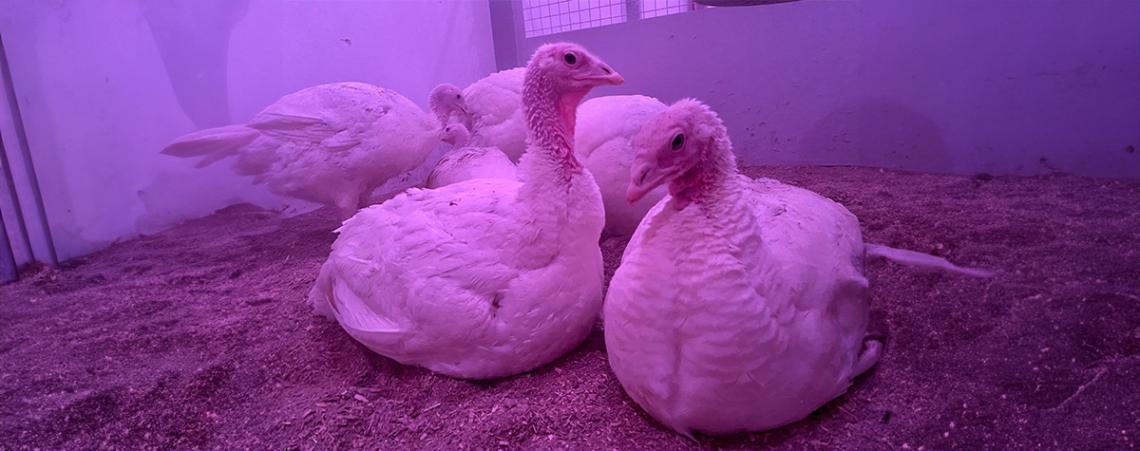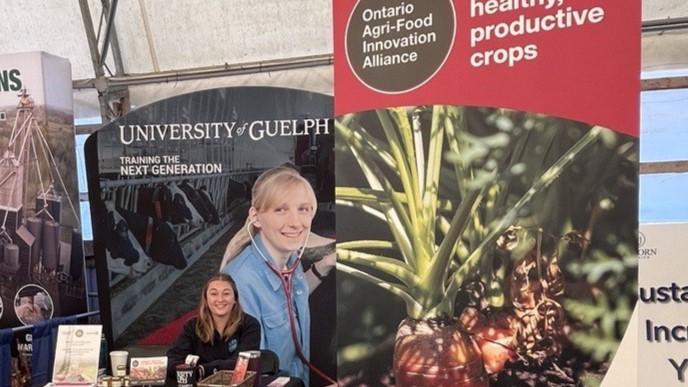
Lighting research lays foundation for improving turkey production
When Clara Ziezold walked into a lecture hall one day during her undergrad at the University of Guelph, she couldn’t have known the guest speaker would set her on a course to research ways to improve reproductive efficiency for the Ontario turkey industry.
Now a PhD candidate in U of G’s Department of Animal Biosciences, Ziezold has completed several projects on the impact of lighting on turkey breeder hen performance, helping build a bigger body of work to support greater productivity for the turkey sector.

